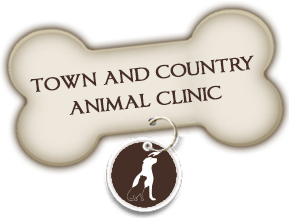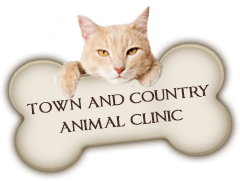Although Halloween is a fun and excited time for us, it can be very scary and uncomfortable for our pets. They don’t understand why there are numerous strangers ringing the door bell and coming into the house in funny costumes throughout the night. The noises they hear from people outside, the colourful costumes, the ringing the door bell and the volume of people can cause your pet to be uneasy in their own home. The most common problems that occur around Halloween are poisoning, ingestion of foreign objects, trauma from car accidents and bite wounds. For this week’s blog we would like to discuss ways we can help our companion animals enjoy Halloween.
We recommend keeping your pet’s indoors while there are trick-or-treaters out in your neighbourhood. Having a dog outside in a fenced in area or on a leash in the yard can just provoke trouble-seeking kids to torment and terrorize your pet. Keeping them inside is the safest place for them. If you have to take them outside for bathroom breaks, we recommend keeping them on a leash to prevent them from chasing after someone or something. You should find a spot for your animal, away from the front door and all of the activity the night brings. To prevent your animal from fearfully bolting through the front door, excessively barking, or potentially biting someone, keep your pet in a room that you can close the door and leave them in a calm environment. Or use a baby gate to prevent them from having access to the trick-or-treaters at the door. Give them a comfortable blanket or bed to lay in, and their favorite toy to keep them busy. Also ensure that your pet has his/her collar and identification on them just in case they accidentally slip through the door.
The treats we have ready for the neighbourhood children can be inviting for your cat or dog but can be harmful to your pet. We have previously discussed how chocolate, xylitol and other human foods can be toxic to our pets. Also, the wrappers and packaging can cause a blockage in your pet’s digestive tract and may require surgery to be removed. Therefore, the days surrounding Halloween inspect your lawn for trash that may be a potential hazard to our pets. On the night of Halloween keep the candy up and out of the reach of your pet’s nose. We recommend having some of your pet’s favorite treats handy to help satisfy them while the night’s events are taking place.
Halloween decorations, much like toys, can have attachments that are not meant for pets to swallow. Our household decorations may become an issue for your pet’s digestive system and outdoor decorations such as lights, can cause your pet to be shocked if they chew on the cords. Candles and other decorations can be knocked over easily by our pets so ensure their safe placement to prevent fires or other accidents from occurring.
Although we enjoy see our pet’s dressed up in costumes, we need to remember the potential hazards of leaving a pet unattended while wearing one. Ensure the costume fits your pet correctly and there are no areas that are tight, or restricting. There may be small, dangling pieces of the costume that may be an inviting chew toy for your pet. We recommend only having your pet’s costume on while they are supervised. If you notice a change in your pet’s behaviour then remove the costume.
Here are a few tips to help you create a calm environment during all of the commotion that Halloween brings. You can use CD’s or DVD’s designed to calm and entertain your dog while the trick-or-treaters are arriving at your door. Remember if you dog has any anxiety tendencies, to reward them when they are acting calm and displaying the behaviour you want. There are also products available to help keep your pet calm during stressful situations. Thundershirts (http://www.thundershirtincanada.ca/) apply a gentle, constant pressure that has a calming effect for anxious or fearful dogs and cats. There is also a diet from Royal Canin that “provides the proper amount of three unique ingredients to help reduce the pet’s anxiety and create an overall calming effect.” (http://www.royalcanin.ca/index.php/Veterinary-Exclusive-Nutrition/What-s-New/Now-Introducing-Canine-and-Feline-CALM). Feeding this diet two weeks prior to a stressful situation may help relieve stress and anxiety in your pet. Also if your cat or dog becomes too anxious you can call us at the Town and Country Animal Clinic (519-250-0099) and we can recommend medications that may help your pet relax during this confusing night.






